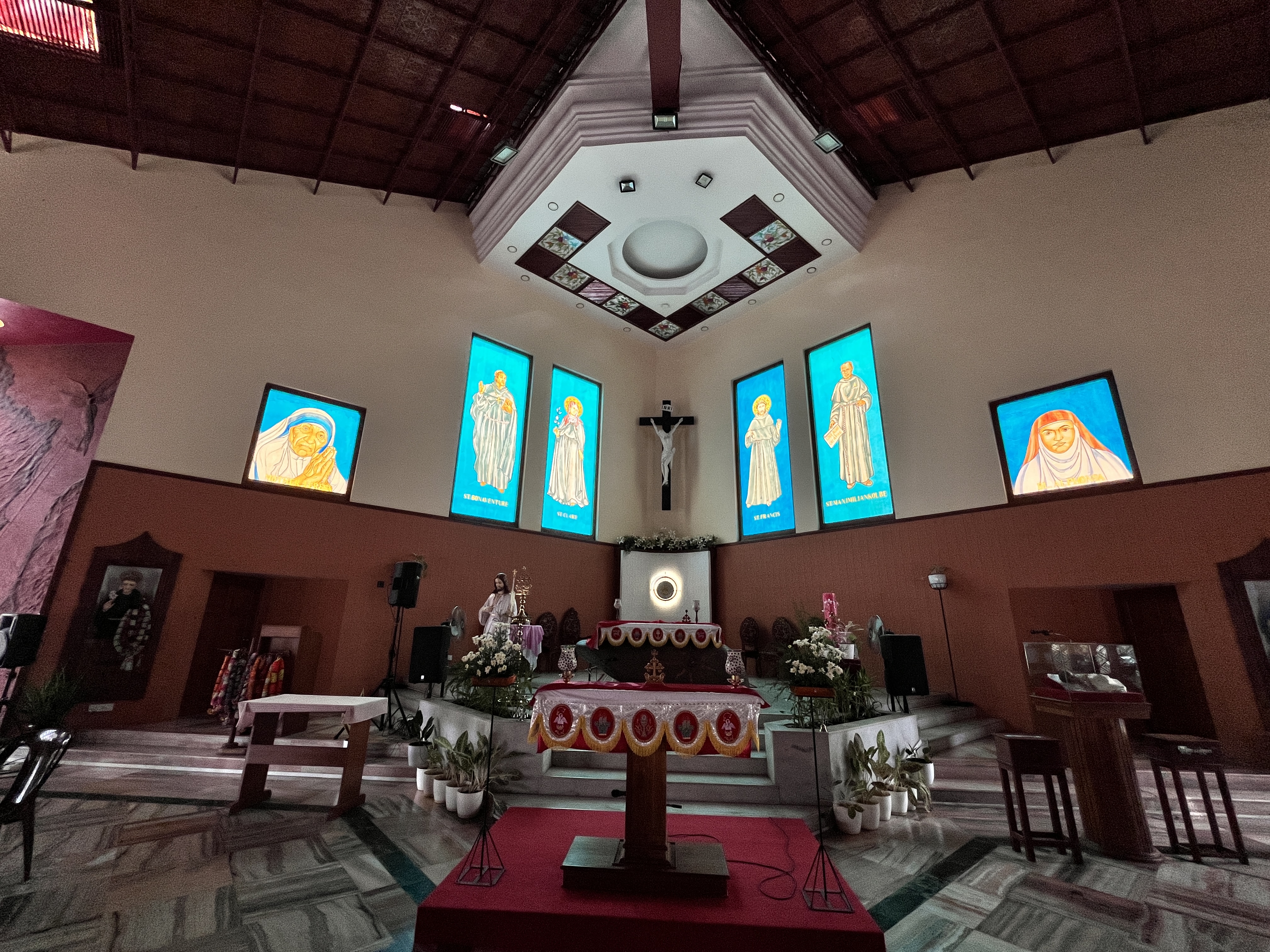Our Founder, Saint Francis of Assisi
In 1209, St. Francis of Assisi received formal approval for his gospel way of life from Pope Innocent III. He entitled his community the "Friars Minor," (meaning Lesser Brothers). St. Francis wanted his followers to imitate the humility of Christ and to minister to the least, the neglected and the forgotten in society.
With over five thousand followers in his lifetime, St. Francis soon inspired the energetic and talented friars toward a broader task of helping to transform every level of society. No positive initiative was outside the community's gospel mandate - as long as the good work did not "extinguish the spirit of holy prayer and devotion to which all other temporal matters must be subordinate" (Rule, Chapter V). The friars quickly became preachers and educators, administrators of royal charities, and advocates of social justice. They spread the faith far and wide as missionaries, and they often spilled their blood as martyrs. The friars' expanding influence ultimately obliged them to even "sacramentalize" culture. As musicians they began to dispel the dullness of life; as architects they reached beyond ordinary shapes and forms; and, as scientists they explored the mysteries of God's creation.
The "Conventual" Identity
After the death of St. Francis, the burgeoning community struggled to keep a united focus. It became increasingly clear that the charism given to Francis and his community could not possibly be contained within one singular expression of gospel life. In 1517, the Franciscan Order was divided into autonomous branches, each following a valid, yet different, observance of St. Francis' Rule.
From the 13th century onward, the friars of the "conventual" tradition have been ministering primarily in urban centers. They banded together in the heart of the European cities where they could touch all levels of society with the Good News of Christ Incarnate. Many of the large churches and ministry centers that were constructed in the earliest years of the Franciscan movement are still administered by the Conventual friars. Our Franciscan heritage in Italy includes everything from the humble sanctuary housing the site of the first friary at Rivo Torto to the world renowned basilica of Santa Croce in Florence.
Large shrines have been the hallmark of the Conventual friars. Beginning with the Assisi basilica and tomb of our founder St. Francis, our friars have built and continue to minister at Franciscan sanctuaries that include the basilica and tomb of St. Anthony in Padua, and the basilica and tomb of St. Joseph of Cupertino (in Osimo). At our international headquarters in Rome, the friars also have care of the basilica of Santi Apostoli, which houses the tomb of the apostles Philip and James. Another significant pilgrimage site where we minister in Italy is the Eucharistic Miracle Sanctuary at Lanciano.
God Dwells In Our Midst,
In The Blessed Sacrament
Of The Altar.
It Would be considered a theft on our part if we didn't give to someone in greater need than we are
SAINT FRANCIS OF ASSISI
Join Us Now

